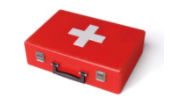Bundled payment: the Big Idea (Quick refresher)
A “bundle” places all of the care for a certain procedure, or series of procedures, into a single bucket. A bundle. The rationale for contracting for a bundle is threefold:
- Patients benefit from having a team of providers focused on improving care processes, which often result in reduced procedures, supplies, and transition time.
- Payers benefit from having a predetermined price they will pay for care, meaning they know the exact amount they will pay for an episode of care.
- Care providers benefit from knowing the predictable amount they will get paid for patient care, even if the costs associated with that care are less than the agreed-upon bundle amount.
When talking about bundles with both internal and external colleagues some of the first questions are “what bundles do we participate in?” and “how can we establish, or build, a bundle?”
This post will address the future of bundled payments.
eople often ask me—in forums, in side-conversations after meetings, and in Q&A session about bundles—where are bundles headed?
In short: no one really knows.
That said, signs point to bundled payments expanding over time.
Point, Counterpoint

Recent History
The Centers for Medicare and Medicaid placed bundled payments at the heart of their strategy for several years, launching both voluntary and involuntary bundled payment programs consistently since 2013. They started with the Bundled Payment for Care Improvement Initiative (BPCI) in 2013 which is a catch-all bundles program that consists of 48 different episodes (e.g., sepsis, diabetes, renal failure) under the program’s umbrella.
Following BPCI came Comprehensive Care for Joint Replacement (2015), Oncology Care Model (2016), and most recently Episode Payment Models (2017). There have been whispers that BPCI 2.0 is around the corner, but that has not been confirmed (understandable given the current evolving state of federal health care policy).
On the commercial side, bundles have grown in popularity in recent years, but they have yet to encompass a sizable portion of patient care. That’s because bundles are best utilized for proscriptive, well-defined episodes of care – they have not proven to be particularly useful payment models outside of that framework.
Projection
Looking at bundles more holistically, some thought leaders have sunk their teeth into the concept of bundles as being the best, innovative way to pay for healthcare moving forward (Kaplan & Porter Harvard Business Review Article). This view is however not a consensus. James and Poulsen argue that capitation will lead health care payment reform moving forward, not bundles.
Whether you side with the bundles camp or the capitation camp the fact remains that bundles will be one of the building blocks of health care reform moving forward. Compared to capitation, bundles are relatively easy to establish, administer, and communicate to physicians, leadership, and staff.
Zac Watne
Why dedicate space to the hot poker that is health law and policy on this website? Context. We are an improvement community. We believe providing context is an act of respect. Talking about "the why" of complex healthcare topics (payment reform included) allows our frontline clinicians and staff to be empowered and informed.
The dojo welcomes guest author and senior value engineer Will McNett with a deep dive into clinic capacity utilization. McNett borrows from manufacturing to offer a framework to measure and increase what really matters to patients: time spent with their provider.
Process mapping is easy. But also hard. This is a common conundrum with value improvement. Here's part 1 of 4, wherein rules are distinguished from guidance.
